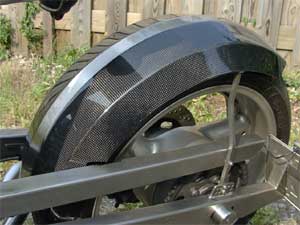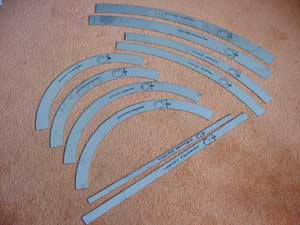|
|

This shows a crossection of the fenders: four carbon fibre facets, the top one consists of a steel strip of 1mm.
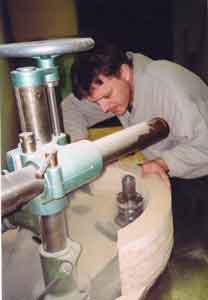
Kees Hadderingh generously provided timber yard and skills to mill the originals of glued MDF.
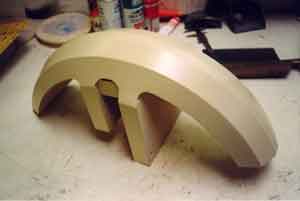
After the milling everything needs to be sandpapered and polished.

The original copy is covered with polyester rugs.
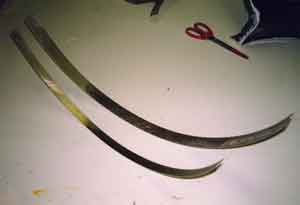
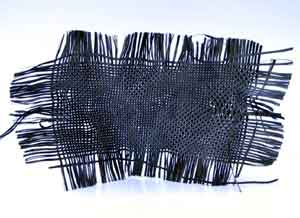
Carbon is a fabric of fibres. It's light-weight and strong.

Carbon and 2-component epoxy casting form the actual fender. Cock Springer (of the Poly-Stone company in Nijmegen) is smoothing it with a spatula.
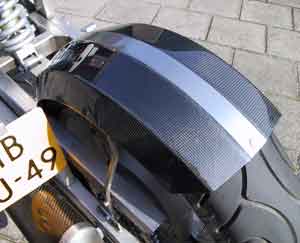
The finishing touch consists of spraying and polishing.

And this is the end result of a year and a half's work.
July until November 2003 I initiated 'Stage III': radical and less radical changes combined with necessary maintenance.
One of the more radical changes I made was replacing the fenders. The first and original fenders were made of carbon fibre, with a stainless steel strip in the middle. As steel and carbon fibre behave very different under pressure, the fenders turned out to be very vulnerable. And, moreover, I wanted them stainless to make the CBX INOX even more INOX.
Aim at the picture to view the new front fender.
Same story for the rear fender: aim at the picture to view the new rear fender.
Zoals zoveel wat ik ondernomen heb, bleek ook deze 'Making Of' complexer dan verwacht. Er moest heel wat gerekend worden (Jan bedankt!).
De 2mm dikke stips heb ik laten laseren. Willy Naves nam het risico om de moeilijke vormen te lassen, en slaagde erin.

